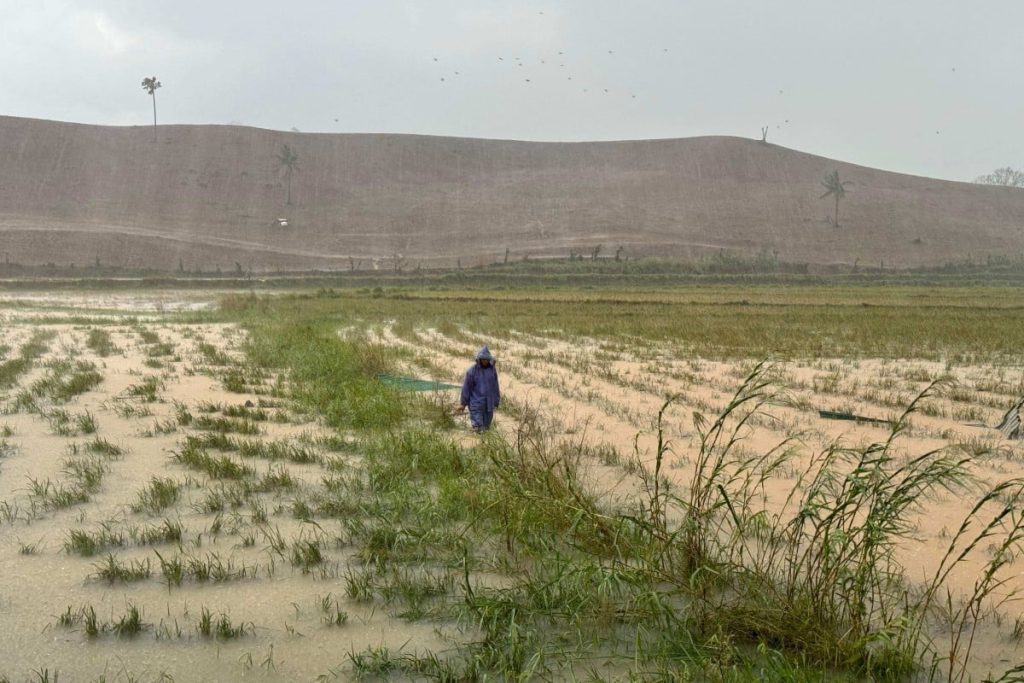Tags
Typhoon-hit Philippines faces rice crisis, more inflation pain as crops perish
The onslaught from six storms caused at least US$131 million of crop losses, with rice bearing the brunt of the damage

Bloomberg
Six powerful storms late in the season that ravaged crops and drenched vast areas of the Philippines have put the nation on track for record rice imports and raised concerns over elevated food inflation.
From the end of October to mid-November, the storms repeatedly dumped heavy rain over northern regions grappling with widespread flooding and saturated soil that could not absorb any more water. The onslaught caused at least US$131 million of crop losses, with rice bearing the brunt of the damage.
The last time six tropical cyclones impacted the Philippines over a three-week period was in 1946, according to President Ferdinand Marcos Jnr, who said rice imports may climb to a record 4.5 million tonnes this year to fill supply gaps. The peak of the nation’s typhoon season is typically July through October.
“We don’t have anything to harvest any more because of the storms,” said Jespher Villegas, a rice farmer in the town of Gonzaga in Cagayan province. His entire crop was submerged by floodwaters and rain is continuing in the region, he added, with his corn and a tilapia fish farm also affected.
The Philippines is on the front line for typhoons in the Asia-Pacific, with around 20 tropical cyclones forming each year near the archipelago. Some storms make landfall, and some can track towards other countries in the region, soaking coffee crops in Vietnam and shutting stock trading in Taiwan.
Warm seas helped to fuel the most active season in the Western Pacific in seven decades this month, stirring up four typhoons, all of which made landfall in the Philippines. Even before the latest string of tropical cyclones, storms had sapped third-quarter growth and reduced rice production.
Tropical Storm Trami leaves tombs submerged in the Philippines
Nearly 600,000 tonnes of rough rice crops have been ruined by storms this year, according to the Philippines’ Department of Agriculture’s disaster management centre. Over half was destroyed by Severe Tropical Storm Trami, which hit the major rice-growing region of Cagayan Valley in October.
Cagayan Valley and Central Luzon, which account for a third of the nation’s rice output, are two regions that were heavily drenched by the six storms. Prolonged rainfall can lead to a favourable environment for “grain-sucking rice bugs” that can attack at any time, the weather bureau warned.
The main rice crop is harvested in the last quarter of the year, and Agriculture Undersecretary Christopher Morales estimates annual output in 2024 may dip by about 1 million tonnes from a year ago to around 19 million tonnes. Still, imports are expected to remain elevated next year.
Overseas purchases could be between 4.5 million to 5 million tonnes next year to cover crop losses and higher consumption from a growing population, said Oscar Tjakra, senior analyst for Rabobank in Singapore. The Philippines imported 3.6 million tonnes in 2023, according to government data.
“There’s high potential for more rice imports given disruptions to local rice production, which poses upside risk to food inflation and downside risk to economic activity,” according to Angelo Taningco, chief economist at Security Bank Corp. in Manila. The storms have also impacted tourism, construction, manufacturing, transport and retail trade, he said.

Gross domestic product growth this year is likely to come in below the Marcos government’s target of at least 6 per cent, Taningco added.
Other crops have been destroyed by weather this year, including more than 350,000 tonnes of corn and over 112,000 tonnes of vegetables, according to figures from the government. Warmer temperatures caused by El Nino earlier in 2025 contributed to the damage, which has been exacerbated by recent storms.
Supply shortfalls risk boosting inflation, which accelerated in October on price gains in rice and other food items. To combat further hikes, the government is considering importing fish and vegetables, Agriculture Assistant Secretary Arnel de Mesa said on Tuesday.
“There’s a lot of rice and other crops that have been destroyed and we just have to compensate for that,” President Marcos said last Friday.
https://www.scmp.com/news/asia/southeast-asia/article/3287480/typhoon-hit-philippines-faces-rice-crisis-more-inflation-pain-crops-perishPublished Date: November 21, 2024






